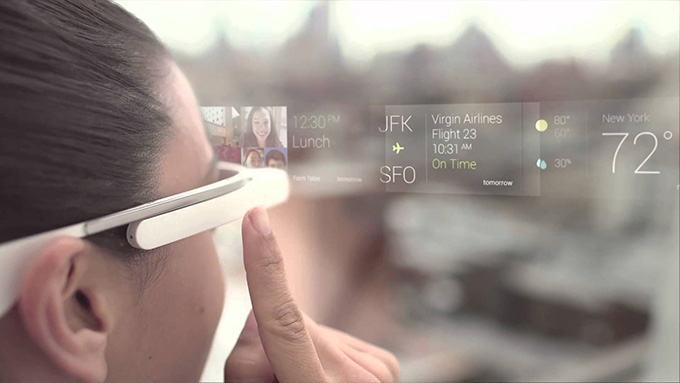 Two years ago when Google introduced Google Glass by having co-founder Sergey Brin sky dive and land on top of the Moscone Center in San Francisco as a kickoff to that year’s Google I/O developer’s conference, Google Glass looked like th coolest thing in the world.
Two years ago when Google introduced Google Glass by having co-founder Sergey Brin sky dive and land on top of the Moscone Center in San Francisco as a kickoff to that year’s Google I/O developer’s conference, Google Glass looked like th coolest thing in the world.
Two years later, the product hasn’t really come out of beta, it’s being banned all over cities, and people are even getting glass-jacked by fist, knife and even taser. Wired just wrote on Tuesday that failure could be the best thing for Google Glass.
While Google Glass hasn’t had one gigantic PR faux pas, you know like tweeting out a picture of a full figured naked woman with a plane hanging out of her private areas, a steady stream of negative press has swarmed the wearable computing device.
Not ready for Prime Time
Many don’t think it was that long ago, but Google Glass was introduced in 2012. At that Google I/O event developers at the conference were given first dibs at putting down $1500 in oder to secure a pair of Google’s earliest eyewear later on that year when released. Google fulfilled those early adopter orders, and on time, but as they took to the street the rest of the world started getting freaked out.
With the Edward Snowden NSA stories breaking around the same time, normal, non glass wearing people, were concerned that people with Google Glass were taping them. Google Glass, at that $1500 price point, couldn’t seem to break the early adopter geek/nerd consumer.
Speculation has grown over the past 24 months as to when Google would actually start selling Glass to the general public and at what price. The internet giant tested the waters on Tuesday by offering anyone the opportunity to order Google Glass, again for the same $1500. Google refused to give out direct sales numbers, but reported early Tuesday that they had sold out of the white version. There were three other colors still readily available.
Google Glass seemed so cool to the tech crowd just two years ago. Now, Google is plagued with the fact that a new term has been coined for Google Glass early adopters. That term, Glasshole, isn’t the least bit flattering to those who shelled out $1500 for glass and for the company behind it.
Google Glass isn’t a bad product though. The technology may be far ahead of it’s time, but it works as described, giving users a heads up display and access to a smartphone right in front of their very eyes, literally.
Without reporting the exact numbers Google isn’t giving the positive narrative of Google Glass any more fuel. If Tuesday had been a runaway success, Google would be shouting from the rooftops of Mountain View, the number of units they sold. It would have been a highlight of their investor call. But that did not happen, leaving every tech journalist with room to speculate on how bad it actually was. Is it the technology? Is it the price? Are they going after the wrong market?
It’s possible it’s a combination of all of those things.
Could Google Glass go the way of the Chromebook?
When Chromebooks were first introduced they seemed like a phenomenal idea. Get the power of an internet computing device in the size of a laptop at a fraction of the cost. Everyone should jump on it, after all so many people are using the cloud to manage their computing needs so you don’t need a full powered laptop.
Chromebooks are a great idea, but for some reason or another they didn’t catch on until just about two technology cycles later. But it’s when the narrative changed that the Chromebook started to take off. Google found a market for the Chromebook in education, and enterprise. Google’s partners Samsung and Asus, have been out and about touting the latest Chromebooks even taking the opportunity at SXSWedu to show off new models and talk to people in the education sector.
Google has started a glass at work program. Google has also heard from doctors, pharmacists, civil servants and even military who have started using Google Glass as a device to compliment their work flow. While some suggest it’s a little too late, there still could be time for Google Glass.
It may be too early for Google Glass to permeate the mainstream. Google Glass may be better in medical and industrial settings. For now, Google should play to those areas and let the developers at the mainstream continue to find ways to make Google Glass cool for normal folks. But when that time comes, and the mainstream public is ready for Google Glass, they need to be ready as well. Remember Blackberry started out for enterprise and government only. Blackberry had a very short life at mainstream and could have been longer if the company had adjusted right.
Google’s also going to need to get the price down to around $300 for the mainstream to start buying Google Glass by the millions. Many can’t fathom spending $1500 on an accessory for a smartphone they may have gotten free.

